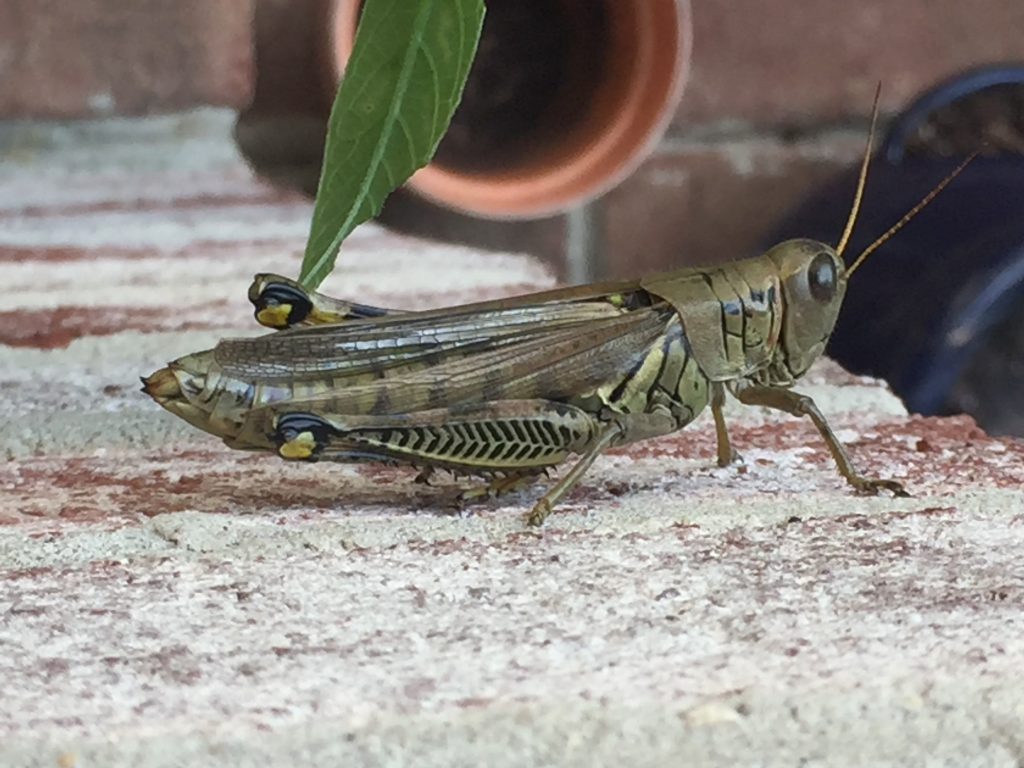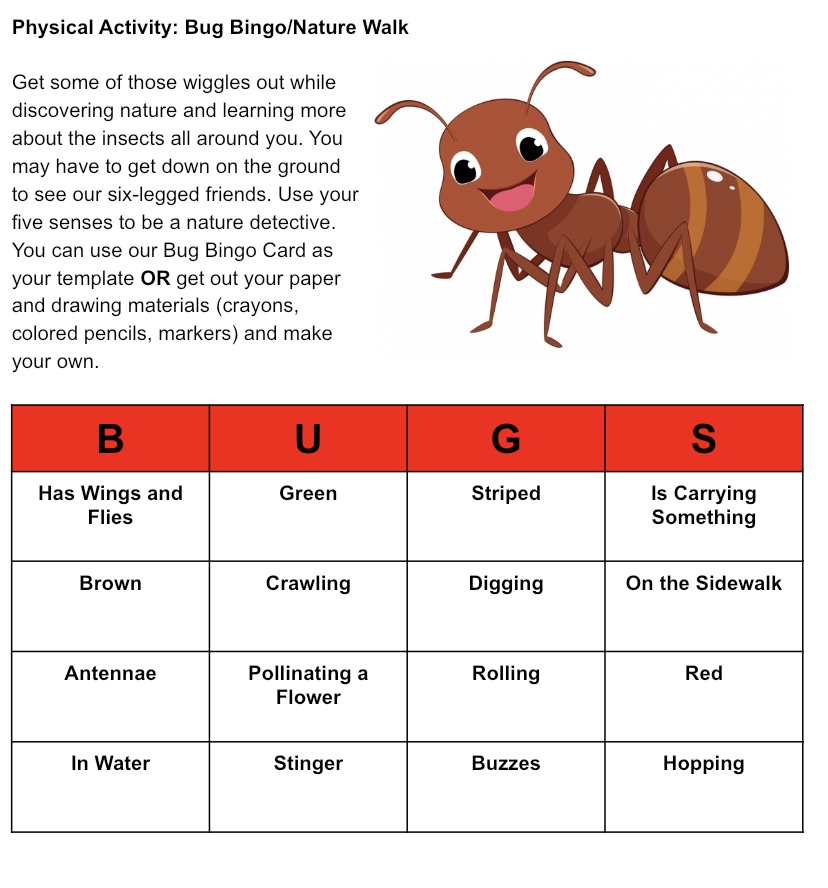A Bug’s Life
Did you know that there are between six and ten million different species of insects? Or that mosquitoes are attracted to stinky feet? Or that grasshoppers existed BEFORE dinosaurs? Today, we are going to learn about some of our insect friends, build a bug, meet some Madagascar Hissing Cockroaches, and go on a nature hunt and play bug bingo! Below are activities that all have A Bug’s Life theme. These activities include things that will help your child develop fine and gross motor skills, problem-solving and engineering skills, and can help them engage in cooperative play, while fostering creativity and perseverance. Feel free to throw in your own activities that might relate, and don’t forget to post your results to social media and tag @discoverymuse to share with us!
Science Activities: Meet Madagascar Hissing Cockroaches and Engineer an Insect
Insects are incredibly cool creatures. Take a moment to get really close to the Madagascar Hissing Cockroaches that live at the Shenandoah Valley Discovery Museum. Where do they live? What are some of the body parts they have that all insects have? How does their brown color help them to blend in with their rainforest home? How does their special hiss help protect them, especially since they can’t fly or sting?

Now let’s take an even closer look at insects. All insects (we aren’t talking about spiders — we’ll save those eight legged creatures for another day) have six legs. They also have a body that is split into threes (a head, a thorax, and an abdomen). Insects also have two antennae that help them sense the world around them, and two compound eyes.
Wings and stingers are entirely optional.
Build a Bug: Engineering Challenge
For this activity, you’ll need to gather items to build your own bug or insect. You can use any of the following, or whatever other materials you have collected at home:
- Blocks or legos
- Playdough
- Craft Sticks
- Paper tubes
- Googly eyes
- Pipe Cleaner
- Markers
- Crayons
- Newspaper
- Paper Scraps
- Clean Plastic Containers
- Old Lids
- Buttons
Directions: Using the materials you have, engineer your own insect. Will it fly? Will it swim? Is it strong? Does it have a stinger? Make sure that you include all of the important parts of an insect in your design. If your grown-up says it’s okay, take a picture and share with us @discoverymuse. If you need inspiration, check out these incredible insects.
Fine Motor Art Activity: Litter Bugs
What You’ll Need For Litter Bugs:
- Found objects from around the house (e.g. egg cartons, bottle caps, old lids, paper tubes, paper clips, pop tops, old straws, etc.)
- Paint for priming and details (white, black, and any other color you have/want)
- Brushes
- Newspaper to avoid mess
- Scissors
- Glue
- A Grown-Up’s Help
Directions:
- Gather your found objects. Think about what kind of litter bugs you want to make.
- Prime your bugs. Paint them all one color.
- Let the paint dry.
- Paint or draw a T across your bug’s body.
- Paint or draw your eyes above the T.
- Decide what recycled materials you want to use for the other parts of your bug (e.g. wings, stinger, six legs, antennae, etc.).
- Use your imagination to make the most creative and fantastic Litter Bugs!
- Share your creations with us @discoverymuse on social media (if your grown-up says it’s okay).
Physical Activity: Bug Bingo and Nature Walk

Conversation Starters and Research Questions
- Learn more about Mary Treat, the early botanist (studies plants) and entomologist (studies insects), who communicated with 19th century scientists Charles Darwin and Asa Gray about her research on insects. She wrote 5 books and 70 scientific articles in a time when women were not encouraged to be biologists. Here’s more information about her work.
- If you’re really inspired, create your own book or museum of incredible insects!
- Visit the Smithsonian Institute’s Incredible Insects. Pick one insect you want to learn more about. What makes it special? Can you build a model of your insect or draw a picture of it in your nature journal?
- Here are more resources to help you build your insect knowledge:
- Make a Bug Barn to observe insects. To make a simple bug barn, roll strips of newspaper or construction paper into little tubes, place in a small container, then leave outside. Observe daily and write down what you see in your nature journal.
A Bug’s Life Read Aloud with Handley Regional Library’s Katie Moss: Du Iz Tak?
Enter the whimsical wonderful world of Carson Ellis’ Du Iz Tak? in this read aloud with Handley Regional Library’s Katie Moss.
Virtual A Bug’s Life Read Alouds
- Some Bugs by Angela DiTerlizzi, illustrated by Brendan Wenzel
- Two Bad Ants by Chris VanAllsburg
- Diary of a Fly by Doreen Cronin, illustrated by Harry Bliss
- Why Mosquitoes Buzz in People’s Ears by Verna Aardema, illustrated by Leo and Diane Dillon
- Inch By Inch by Leo Lionni
- There Was an Old Lady Who Swallowed a Fly by Simms Tabek
- Shoo Fly Guy by Tedd Arnold
- The Very Lonely Firefly by Eric Carle


